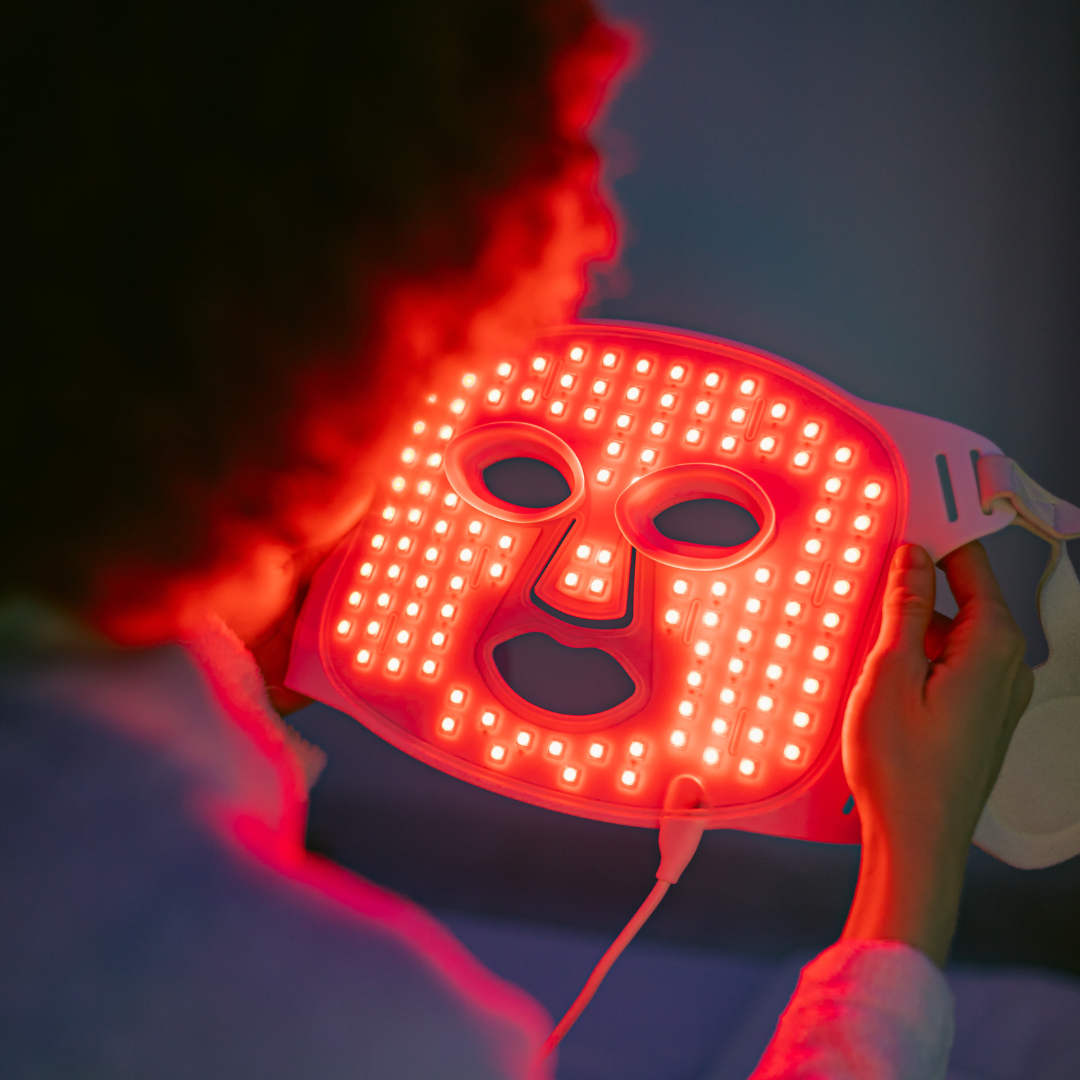
LED Face Masks: The Science Behind Instagram's Favorite Glow-Up Tool
Share
The Instagram Glow That's Actually Real
You've probably seen those futuristic-looking face masks lighting up your social media feed, making everyone look like they're about to perform surgery or join a sci-fi movie. But behind the dramatic visuals lies legitimate science that's transforming how we approach skincare at home.
LED face masks aren't just another beauty trend destined to disappear like jade rollers or vampire facials. They're based on photobiomodulation therapy, a treatment that NASA originally developed to help heal astronauts' wounds in space.
How Your Skin Responds to Light
Your skin cells contain tiny powerhouses called mitochondria that produce energy (ATP) to fuel cellular repair and regeneration. When specific wavelengths of light penetrate your skin, they stimulate these mitochondria to work overtime, essentially giving your skin cells a shot of espresso.
Different colors of light penetrate to different depths and trigger various cellular responses. It's like having a toolkit where each tool serves a specific purpose in your skin's renovation project.
Red Light: The Anti-Aging Powerhouse
Red light at 630-700 nanometers penetrates deepest into your skin, reaching the dermis where collagen production happens. This wavelength stimulates fibroblasts (collagen-producing cells) to create more structural proteins that keep your skin firm, plump, and youthful.
Regular red light therapy can reduce fine lines, improve skin texture, and give you that coveted "lit from within" glow that no highlighter can replicate. It's like giving your skin a personal trainer that works on strengthening and toning from the inside out.
Blue Light: The Acne Assassin
Blue light at 415 nanometers specifically targets the bacteria responsible for acne breakouts. Propionibacterium acnes (P. acnes) produces porphyrins, compounds that become toxic when exposed to blue light, essentially causing the bacteria to self-destruct.
This makes blue light therapy incredibly effective for treating active breakouts without the drying effects of harsh chemicals. It's particularly beneficial for people with sensitive skin who can't tolerate traditional acne medications.
Near-Infrared: The Deep Healer
Near-infrared light (700-1000nm) penetrates even deeper than red light, reaching muscle tissue and promoting circulation. This wavelength is excellent for reducing inflammation, speeding up healing, and improving overall skin health from the deepest layers up.
What Actually Happens During Treatment
When you slip on an LED face mask like the Skintekie LED Face Mask, you're essentially giving your skin cells a 10-20 minute energy boost. The light doesn't feel hot or cause any discomfort – it's more like basking in very gentle, therapeutic sunshine.
During this time, your mitochondria absorb the light energy and convert it into cellular fuel. This increased energy production triggers a cascade of beneficial processes: enhanced collagen synthesis, improved blood circulation, reduced inflammation, and accelerated cellular repair.
The Timeline: When Glow Meets Reality
Unlike instant beauty filters, LED therapy requires patience and consistency. You might notice your skin looking slightly more radiant after your first few sessions, but the real magic happens over time.
Week 2-3: Improved skin texture and subtle glow Week 4-6: Reduced inflammation and minor blemishes Week 8-12: Visible improvement in fine lines and overall skin tone 3+ months: Significant anti-aging benefits and sustained skin health improvements
Why At-Home Beats Professional
Professional LED treatments can cost $75-150 per session, and dermatologists typically recommend 8-12 sessions for optimal results. That's potentially $1,800 for a full treatment course, not including maintenance sessions.
Quality at-home devices like the Skintekie LED Face Mask deliver the same therapeutic wavelengths and can be used indefinitely. You're getting professional-grade treatment at a fraction of the cost, with the added convenience of treating yourself whenever your schedule allows.
The Multi-Tasking Advantage
Unlike topical skincare products that address one concern at a time, LED therapy tackles multiple skin issues simultaneously. A single session can work on anti-aging, acne prevention, inflammation reduction, and overall skin health improvement.
This makes LED masks particularly valuable for people with combination skin or multiple skin concerns who would otherwise need several different products or treatments.
Safety: What You Need to Know
LED face masks are remarkably safe when used as directed. The light wavelengths used are non-UV and don't cause skin damage like sun exposure. The most important safety consideration is protecting your eyes – quality devices include protective eyewear or built-in eye shields.
Some people experience mild skin sensitivity initially, similar to starting any new skincare routine. This typically resolves within a few sessions as your skin adapts to the treatment.
Maximizing Your LED Results
The effectiveness of LED therapy depends largely on consistency and proper usage. Using your device 3-4 times per week consistently will yield better results than daily use for two weeks followed by sporadic sessions.
Combining LED therapy with quality skincare products can enhance results. The increased cellular activity from light therapy may improve your skin's ability to absorb and utilize serums and moisturizers applied after treatment.
The Future on Your Face
LED face masks represent a convergence of space-age technology and accessible beauty treatment. They're not replacing your skincare routine – they're supercharging it by working at the cellular level where creams and serums can't reach.
The Skintekie LED Face Mask brings this professional-grade technology into your home, offering a practical, cost-effective way to achieve the kind of skin transformation that was once only possible through expensive clinical treatments.
